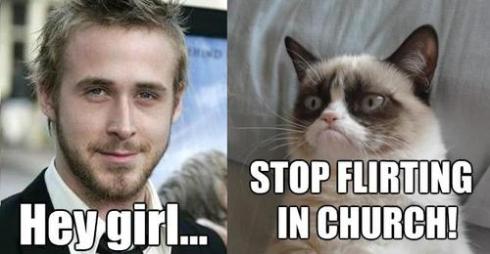This isn’t directly pertinent to gender & media, but I have a lot of ideas and no opinions/conclusions so maybe writing will help.
The November Project is a fitness initiative that started in Boston and has now spread to cities across the US. On Monday, Wednesday, and Friday mornings, the “tribe” (which is just whoever wants to attend) meets at different locations around Boston to perform an outdoor workout. It’s completely free and has a CrossFit-like ethic – grit, determination, and bodyweight exercises. I have several friends who do it and the general consensus is that it’s awesome. Personally, I love the idea – free fitness, customizable to your ability level, with random people who become your friends.
This month, the November Project has initiated the #deckaday challenge. You take a pack of randomly shuffled cards and turn them over one by one. Red is pushups and Black is sit-ups. The amount on the card corresponds to the number of reps you do: 2-10, then Jack 11, Queen 12, King 13, and Ace 14. You go through the entire deck as fast as possible. For the #deckaday challenge, you complete this routine every day this month, and try to get your times lower and lower.
I’ve never actually attended the November Project, but I saw the challenge on Facebook and thought I might give it a try. Now, this is no easy challenge; no “plank a minute a day for a week” here! Going through the entire deck means you do 208 pushups and 208 sit-ups. THAT’S A LOT. Yesterday (Tuesday) was 10/1, the first day of the challenge, and my chest was already quite sore from a Monday dance rehearsal. I decided to switch up the challenge – I substituted squats for pushups. It was definitely hard, but I enjoyed it in a masochistic kind of way and I felt pretty accomplished afterwards. Today I woke up and my abs were sore, my legs were sore, and my chest was still sore from Monday.
…But you’re supposed to do the challenge every day, with no exceptions. What? If my abs are sore, that’s a very clear signal to rest and let the micro-tears in my muscles repair. My idea of rest is not 208 more sit-ups. Here, then, is where the whole dream starts to break down. It’s not healthy to intensely work specific groups of muscles for 31 consecutive days, and it’s not a constructive way to build fitness. In general, it’s better to fatigue a muscle group, then let it rest for a day or two or three (allowing it to repair and regain strength) before working it again. This staggered training prevents overuse injuries while being consistent enough to build power or bulk or endurance or whatever your specific goal is. When you train every day, you’re not giving your muscles enough time to recover, so they’re constantly fatigued and trying to catch up. The #deckaday challenge magnifies this problem because of its high rep count and focus on speed. 208 pushups is a huge amount no matter what type you’re doing (normal, military, knee, etc.), especially if you’re using proper form. However, the focus on speed is a blatant invitation to sacrifice form; there’s a limit to how fast you can properly do a pushup or a sit-up no matter how strong you are. This is especially true as you reach the bottom of the deck. If you’re shooting for a low time, you’re picking up the pace for the home stretch, but this is also the time that you’re most tired and are most likely to sacrifice form.
So what did I do today? I did the full deck. I modified it again – sit-ups and high planks – but I still killed my already sore abs. At this point much of my body is sore, I don’t know what I’m going to do tomorrow without feeling unsafe. And should I even continue the challenge? I don’t have a ‘challenge buddy,’ and there’s no social pressure for me to keep going. So why do I have motivation to keep going? I almost feel a sense of obligation, but to whom?
This is where I start to really look at the #deckaday challenge and its broader fitness ethos. CrossFit’s popularity has exploded in the past couple of years, and it’s reaching the point where people are starting to examine and critique it. (Crossfit is a fitness method that’s unrelated to the November Project but the two share some similar values.) I’ve never participated in CrossFit, but I’ve read a fair amount of the criticisms. The first one that comes to mind is Eric Robertson’s fantastic exploration of the dangers of an extreme attitude towards fitness, found at this link. The #deckaday challenge exposes many of these values – faster, more, stronger, better. What it does not recognize is the importance of body awareness and respect, and the flexibility that this requires. This fitness challenge, and almost all others, are so enticing because they’re rigid: do x for y days and you’ll obtain z! These concrete promises are almost irresistible, and exploring why is something I’ll maybe discuss later. In the end, though, #deckaday does not guarantee fitness success and a rockin’ bod and total confidence. It is not a magical solution, and it doesn’t make you a “good” athlete or person. It just makes your muscles really fucking tired.
Despite me recognizing all of this, however, I still really want to complete the challenge. I feel like it will make me better and more accomplished. This disconnect is frustrating to navigate, but it boils down to a simple decision every day. Do I do half a deck some days? If I just stop, am I giving up or am I making a personal statement? Why am I drawn to fitness in challenge form, rather than a more holistic and balance and personal exercise schedule? Why am I making this into a moral issue, when nobody actually cares about how many sit-ups I do in a day?
I feel like this might be a multi-part thing; I’ve laid out the problem here but I haven’t really gone into a deeper analysis. I can definitely bring gender and media into this as well. Stay tuned?




